Discover 35 hidden attractions, cool sights, and unusual things to do in Münster (Germany). Don't miss out on these must-see attractions: Münster Cathedral, Prinzipalmarkt, and Schloss Münster. Also, be sure to include Aasee in your itinerary.
Below, you can find the list of the most amazing places you should visit in Münster (North Rhine-Westphalia).
Table of Contents
Münster Cathedral
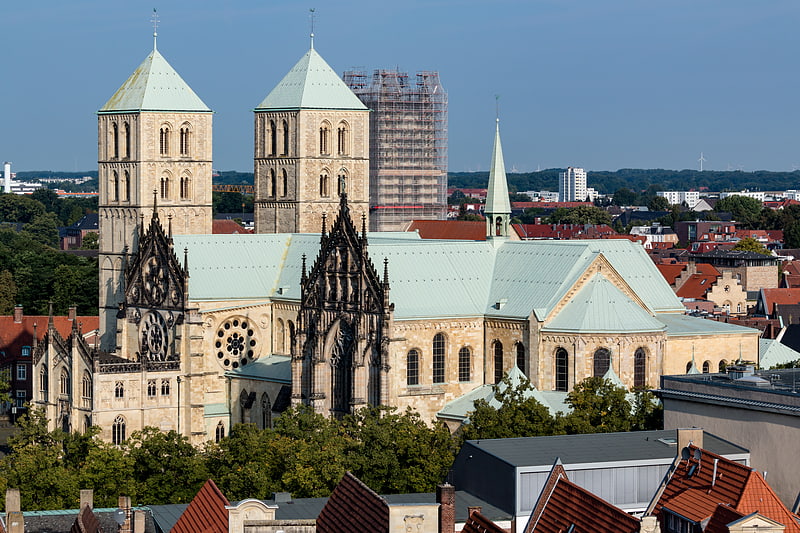
Also known as: St.-Paulus-Dom
13th-century Catholic place of worship. Münster Cathedral or St.-Paulus-Dom is the cathedral church of the Catholic Diocese of Münster in Germany, and is dedicated to St Paul. It is counted among the most significant church buildings in Münster and, along with the City Hall, is one of the symbols of the city.
The cathedral stands in the heart of the city, on a small hill called Horsteberg, which is encircled by the Roggenmarkt, Prinzipalmarkt and Rothenburg streets and by the Münstersche Aa river. This area, which also contains the Domplatz and surrounding buildings, was the old Domburg. Today the cathedral is the parish church for this area. West of the cathedral lies the bishop's palace and part of the old curia complex along with the current cathedral chapter.
The cathedral had two predecessors. The first cathedral (called the Ludgerus Dom, 805-1377) stood to the north of the current cathedral; the second cathedral was built in the tenth or eleventh century and was demolished during the construction of the third and current cathedral between 1225 and 1264. The imposing westwerk with its nearly identical towers was built as part of the second cathedral around 1192 and was incorporated into the current building. As a result, the cathedral is a mixture of styles, combining the Romanesque westwerk, old choir, and west towers with the Gothic nave, transepts, high choir and ring of chapels.
Each of the cathedral buildings served as the cathedral church of the Diocese of Münster, but each also had additional functions, at least at times. The original Carolingian cathedral was also the Collegiate church for a monastery founded by Liudger, with the monks living under the rule of Chrodegang. Each cathedral served as a parish church, originally for the whole of Münster. As a result of the foundation of further parish churches, the parish district of the cathedral was reduced to the Old Domburg and Domimmunität in 1090. In the first half of the thirteenth century, the Church of St Jacobi was built on the Domplatz. With the completion of this church, the cathedral, which was then under construction, lost its function as a parish church entirely. Since the demolition of St Jacobi in 1812, the cathedral regained its role as the parish church for the Old Domburg and Domimmunität.
The cathedral contains the tomb of the former Bishop of Münster, Clemens August Graf von Galen who became a Cardinal shortly before his death in 1946 and was beatified by Pope Benedict XVI in 2005.[1]
Address: Domplatz 28, 48143 Münster (Mitte)
Prinzipalmarkt
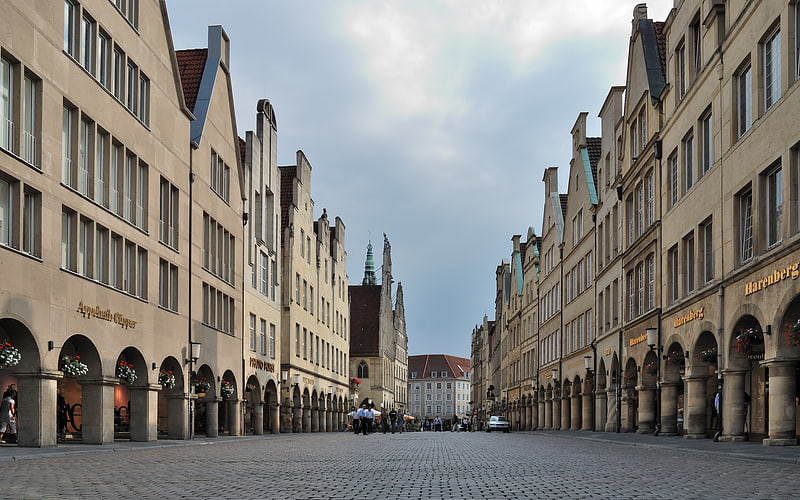
Historical landmark in Münster, Germany. The Prinzipalmarkt is the historic principal marketplace of Münster, Germany. It is shaped by historic buildings with picturesque pediments attached to one another. It extends from St. Lambert's Church in the north to the Townhouse Tower in the south and is home to luxurious shops and cafés. The centre of the eastern side, opposite the south-eastern entrance to Cathedral Square, is dominated by the Historical City Hall of Münster.
Having been largely destroyed during World War II, the Prinzipalmarkt was reconstructed from 1947 to 1958, most buildings true to the original.[2]
Schloss Münster
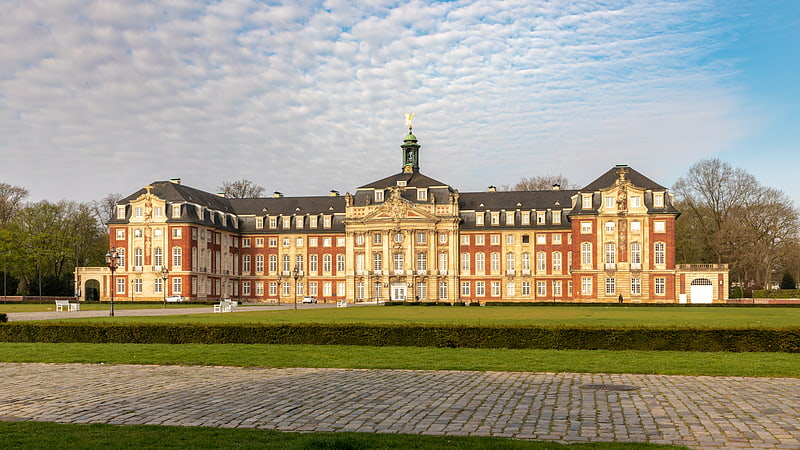
Castle in Münster, Germany. Schloss Münster, officially Fürstbischöfliches Schloss Münster, is the schloss built as the residence of the prince-bishop of Münster, modern-day North Rhine-Westphalia, Germany. It was built between 1767 and 1787 in baroque style as a mansion for the last but one prince-bishop Maximilian Friedrich von Königsegg-Rothenfels. The architect was Johann Conrad Schlaun. Since 1954 it has been the seat and landmark of the Westphalian Wilhelms University. The castle is built from the typical Baumberger sandstone of Münster.[3]
Address: 2 Schlossplatz, Münster (Mitte)
Aasee

Lake in Germany. Aasee is a lake at Münster, North Rhine-Westphalia, Germany. At an elevation of 54 m, its surface area is 0.402 km2.[4]
Address: Scharnhornstraße 100, Münster (Mitte)
LWL-Museum für Naturkunde
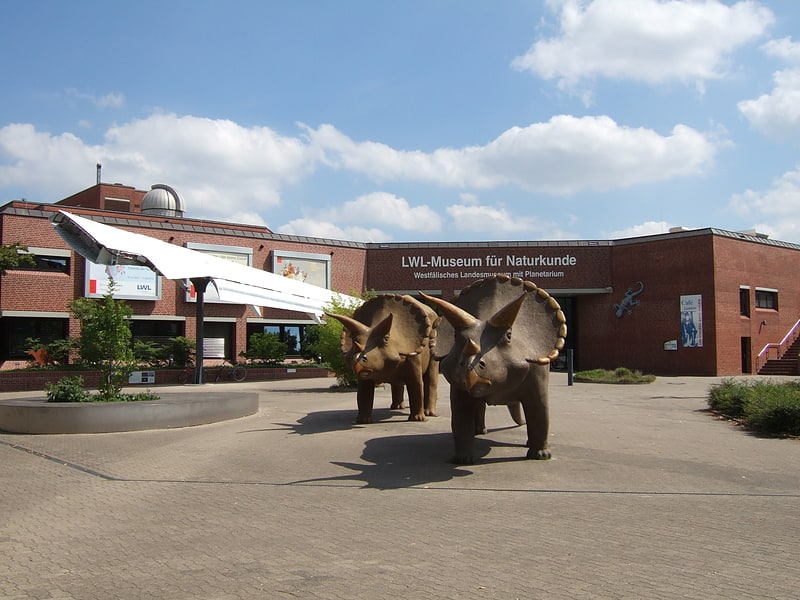
Museum in Münster, Germany. The Westphalian Museum of Natural History is a natural history museum in Münster, Germany.[5]
Address: Sentruper Str. 285, 48161 Muenster (West)
Museum für Lackkunst
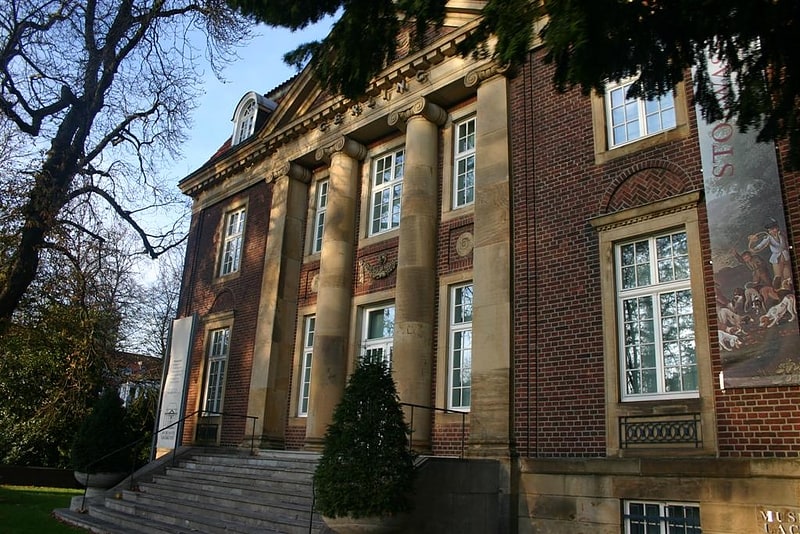
The Museum of Lacquer Art is a museum in Münster, Westphalia devoted to the history of lacquer art. It is the only institution of its kind in the world, with a collection of around 1,000 objects from East Asia, Europe, and the Islamic world from more than two thousand years ago. The current director is art historian Gudrun Bühl. It is owned by BASF Coatings.[6]
Address: Windthorststraße 26, 48143 Münster (Mitte)
Botanischer Garten Münster
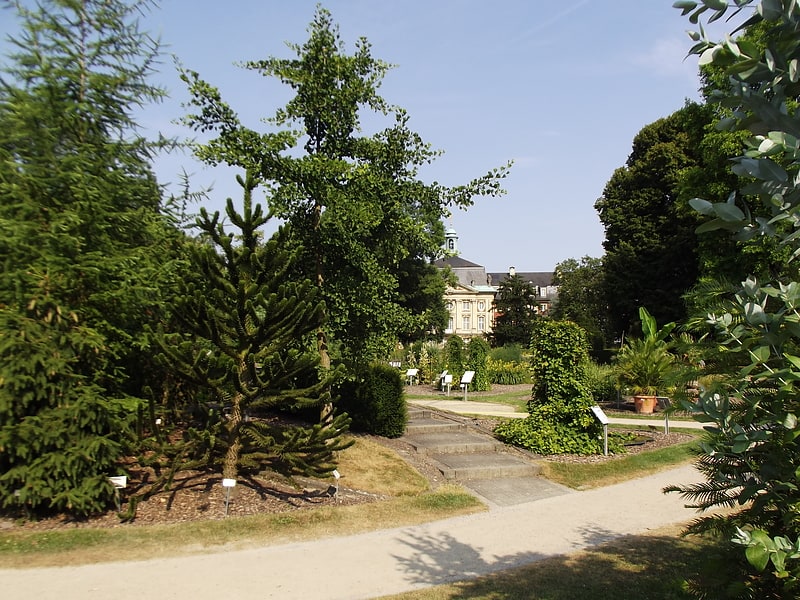
Biodiversity of flora in botanic gardens. The Botanischer Garten Münster is a botanical garden maintained by the University of Münster.[7]
Address: Schlossgarten 3, Münster (Mitte)
Villa ten Hompel
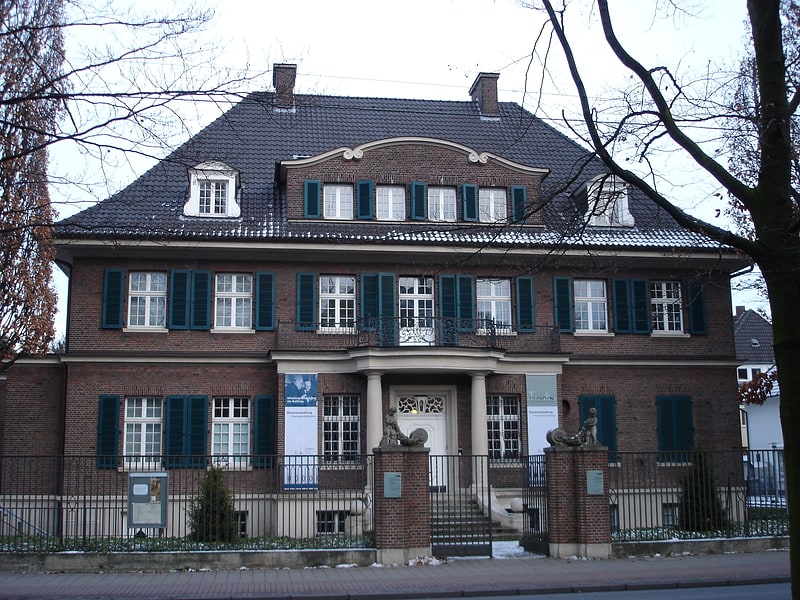
Museum in Münster, Germany. The Villa ten Hompel is a memorial site for offenses committed by the police and government administration during the National Socialist period in the city of Münster, located in the German state of North Rhine-Westphalia.
The Villa ten Hompel was named after its builder, the industrial merchant Rudolf ten Hompel from Münster, and was constructed from 1924 on.
Ten Hompel was one of the richest citizens of Münster and was co-owner of the “Wicking-Werke”, the biggest combine of cement factories in Germany from this time period. Furthermore, he was a representative of the Catholic Centre Party in the German Reichstag from 1920 until 1928.
The Villa and its ample gardens were often used for parties and other social gatherings and were therefore equipped very luxuriously. During the Great Depression at the beginning of the 1930s, ten Hompel’s “Cement Empire” collapsed. In 1935, the former Chief Executive ten Hompel was convicted of embezzlement, bankruptcy offense, postponement of fortune, and forgery of documents by the regional superior court in Münster and was sentenced to three years in prison and a fine of 22,000 Reichsmark. In 1939, the Villa became property of the National Treasury and Rudolf ten Hompel moved to Munich, where he died in 1948.
In 1940 the Ordnungspolizei (Uniformed Police) moved into the Villa and made it the headquarters of the sixth military district, which contained the whole of North Rhine-Westphalia and the area around the nearby city of Osnabrück and parts of Belgium. During the war, police guards were sent by the Villa to supervise deportation trains, as well as the Arbeitserziehungslager, or worker education camps.
The Chief Commander of the Ordnungspolizei supervised nearly 200,000 men. In 1940 the Major General of the police, Heinrich Lankenau, was appointed as Chief Commander of the Ordnungspolizei. In 1942 Lankenau was replaced by Major General d.P. Kurt Göhrum. In the fall of 1944 Lieutenant General Reiner Liessem held office until the end of the Second World War. Liessem moved the headquarters of the Ordnungspolizei to Düsseldorf.
After the Second World War the Villa ten Hompel served as headquarters for the state police, and from autumn 1946 the criminal police. But this criminal police unit was combined with the Düsseldorf criminal police in October 1946, and the criminal police of Münster withdrew from the Villa. Until 1953, the water police was also stationed there. Afterwards, the water police headquarters were moved to Duisburg.
Beginning in 1953, the district government’s Reparations Department took up residence in the Villa. It was responsible for the facilitation of reparations payments to victims of National Socialism and their surviving family members. In the years until 1968, 12,000 individuals applied for such payments, to which 100,000,000 Reichsmark were distributed altogether.
At the end of the 1990s the municipality of Münster bought the Villa in order to set up a memorial site dedicated to research concerning the attitudes of police and public administration and the ways in which they carried out their work. Lord Mayor Berthold Tillmann inaugurated the first exhibition on the 13th of December 1999 in the presence of the Minister President of North Rhine-Westphalia, Wolfgang Clement, and the President of the Central Council of Jews in Germany, Paul Spiegel. Apart from the permanent exhibition Im Auftrag (On Behalf Of), the Villa presents exhibitions that deal with subjects such as National Socialist war crimes and police or administrative history. Besides the exhibitions, there is a library and archive specialized in these topics. The Villa works closely with the local university, with schools and with the police.[8]
Address: Kaiser-Wilhelm-Ring 28, Münster (Mitte)
Allwetterzoo Münster
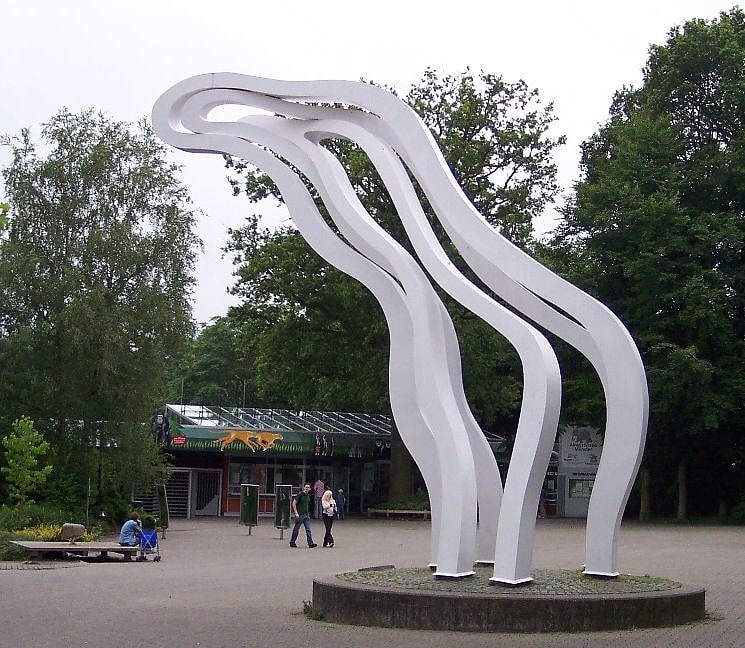
Zoo in Münster, Germany. The Allwetterzoo Münster is a Zoo in Münster in Westfalen, Germany.
The Zoo origins in the 1875 founded, and 1973 closed Zoologische Garten zu Münster, replaced by the 1974 founded Allwetterzoo Münster, which was built in a tree-rich area close to the lake Aasee.[9]
Address: Sentruper Str. 315, 48161 Muenster (West)
Zwinger
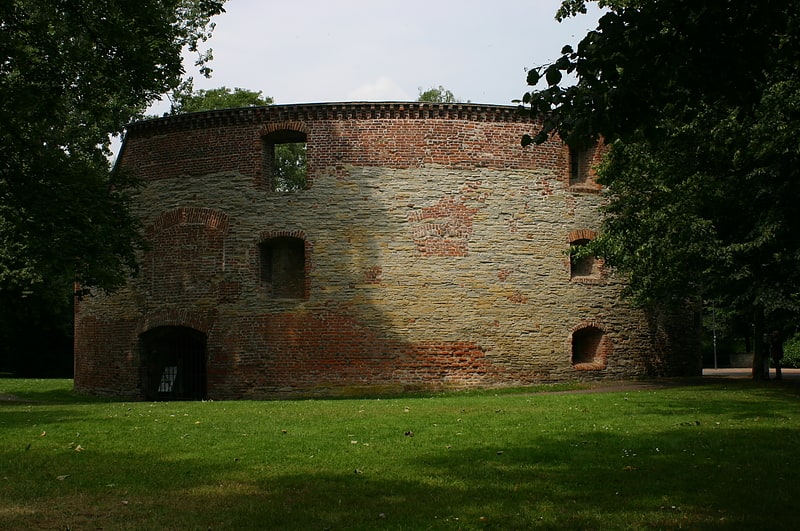
Fortress in Münster, Germany. The Zwinger in the Westphalian city of Münster is part of the old city fortifications from the Early Modern Period. In the Nazi era it was both a gaol and a Gestapo place of execution and was heavily damaged by allied air raids. Since its conversion to a memorial the Zwinger has belonged to the Münster City Museum and is home to the sculpture Das gegenläufige Konzert.[10]
Address: 30a Lotharingerstraße, Münster (Mitte)
Theater Münster

Theatre in Münster, Germany. Theater Münster is a municipal theatre in Münster, North Rhine-Westphalia, Germany, for plays and music theatre. When it opened in 1956 it was regarded as the first new theatre building in Germany after World War II. It integrates some ruins of the former theatre and musical school destroyed in the war.
The company performs music theatre, plays and theatre for young people (Junges Theater). Concert series of the orchestra Sinfonieorchester Münster also take place in its hall. The program includes further productions of the Niederdeutsche Bühne (Low German stage), guest performances, lectures and exhibitions.[11]
Address: Neubrückenstr. 63, 48143 Münster (Mitte)
Segel-Club Münster

Founded in 1948, Segel-Club Münster e. V., with a good 300 members, is Münster's oldest sailing club and has its clubhouse on the lower part of Lake Aasee. Its activities include recreational and competitive sailing, including for the disabled and especially for young people.
Address: Annette-Allee 7, Münster (Mitte)
Domplatz
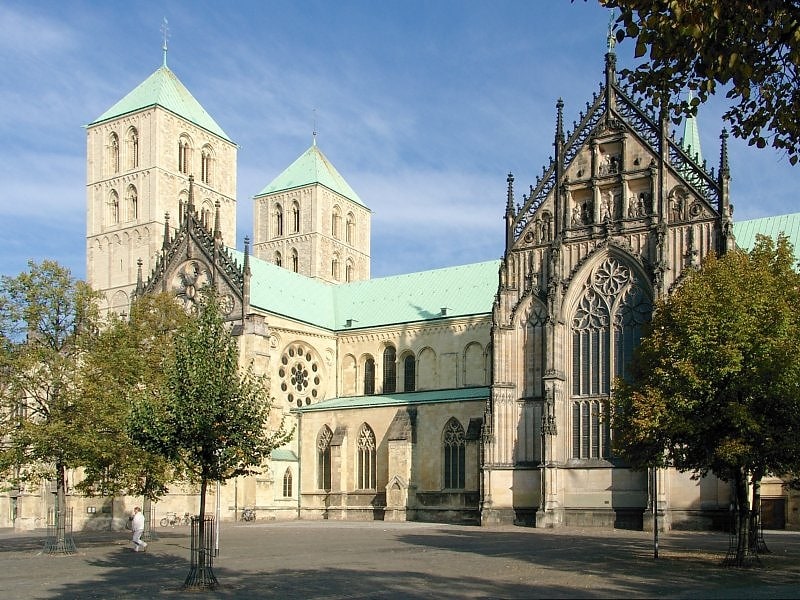
Historical market square in Münster, Germany. The Domplatz in Münster, Westphalia, is the square in front of Münster Cathedral. The square lies to the south of the cathedral.
The traces of the 14th century Domburg are still recognisable in the modern Domplatz. The square was the centre of the Domimmunität. In the middle ages it contained the curia of the Domherren of the Münster Cathedral Chapter and St. Jacobi, the parish church for its servants. Immediately in front of the main door, the Michaelistor, stands the City hall, erected in the 14th century as an assertion of the townsmen against the bishop.
South of the Domplatz is the headquarters of the Münster Bezirksregierung, a branch of Deutsche Post, two cafes and the Westphalian State Museum of Art and Cultural History. On the west side the Domplatz is bordered by the Fürstenberghaus of the University of Münster and the Dishop's Balace, on the west side by the backs of the shops on Prinzipalmarkt and the buildings of the old Reichsbank branch, which now house offices of the Bezirksregierung.
On Wednesday and Saturday mornings there is a large market. On Fridays, biologically controlled and/or locally produced products are sold at a Biomarket. A portion of the east part of the square is a dedicated carpark, with about 100 positions, in order to alleviate the parking shortage in the Münster inner city area. The Domplatz is a key venue for open air events like the Eurocityfest. On the 1200th jubilee of the Diocese of Münster in Summer 2005, the band Silbermond sang in the Domplatz to an audience of 30,000.[12]
City Hall
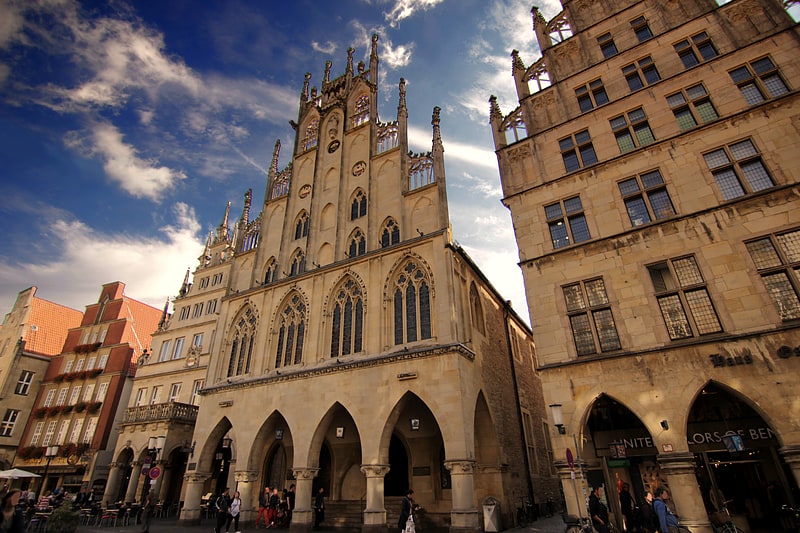
Also known as: Historisches Rathaus Münster
1300s city hall and gothic landmark. The Historical City Hall of Münster was one of the theatres of the negotiations of the Peace of Westphalia which concluded the Thirty Years' War in Western Europe and the Eighty Years' War between Spain and the Republic of the Seven United Netherlands. It was the site of the Peace of Münster of 1648.
Located in the centre of Prinzipalmarkt, it is the city's predominant landmark – besides Münster Cathedral.
Having been destroyed during World War II, it was rebuilt true to the original from 1950 to 1958.[13]
Address: Prinzipalmarkt 10, 48143 Muenster (Mitte)
Wolfgang Borchert Theater
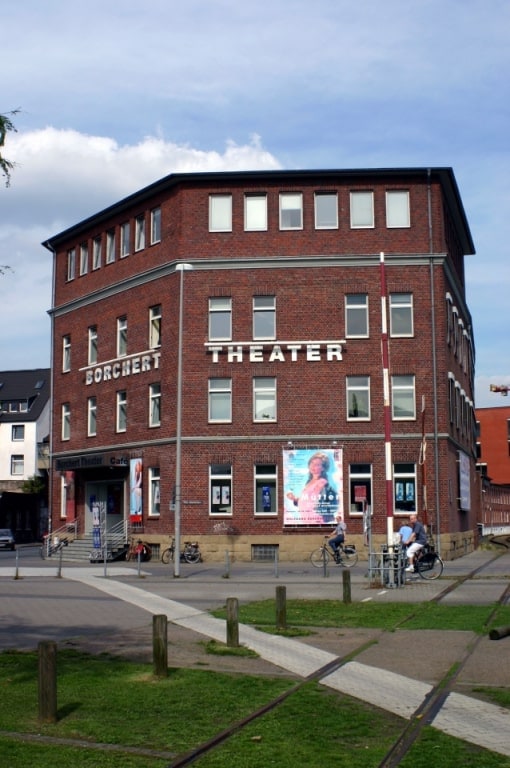
Theater in Münster, Germany. The Wolfgang Borchert Theater is a private theater in Münster. It is one of the oldest private theaters in Germany.
The theater was founded in 1958 as the Theater im kleinen Raum at the Münster Prinzipalmarkt. At the start of the sixties it moved to the Münster Hauptbahnhof and became the Zimmertheater Münster.
For the 1982/83 season it was renamed to the Wolfgang Borchert Theater. In 1999 it moved to its present location at Hafenweg.[14]
Address: Am Mittelhafen 10, 48155 Muenster (Mitte)
Westphalian State Museum of Art and Cultural History
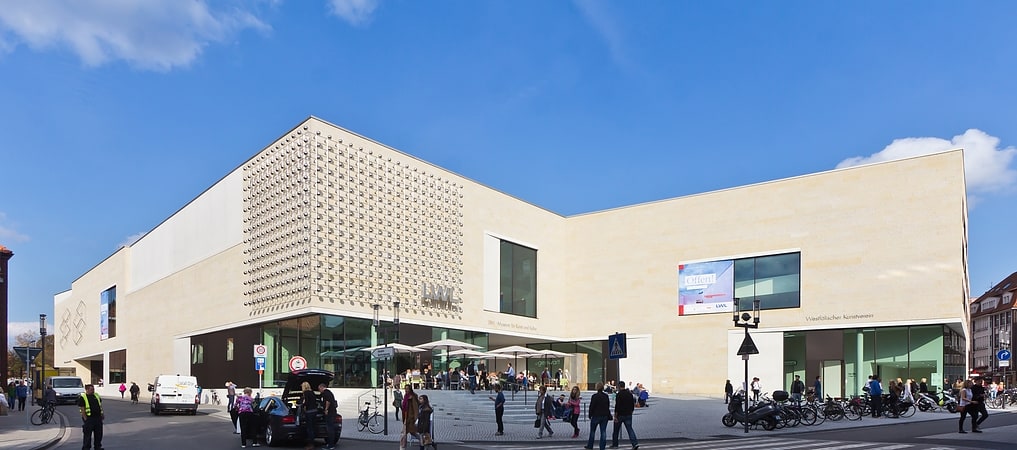
Also known as: LWL-Museum für Kunst und Kultur
Museum in Münster, Germany. The Westphalian State Museum of Art and Cultural History is an arts and cultural museum in Münster, Germany Besides an extensive collection ranging from spätgotik painting and sculpture to the Cranachs, the museum specializes in paintings from the Der Blaue Reiter and Die Brücke movements, in particular works by August Macke.[15]
Address: Domplatz 10, 48143 Muenster (Mitte)
Münster astronomical clock
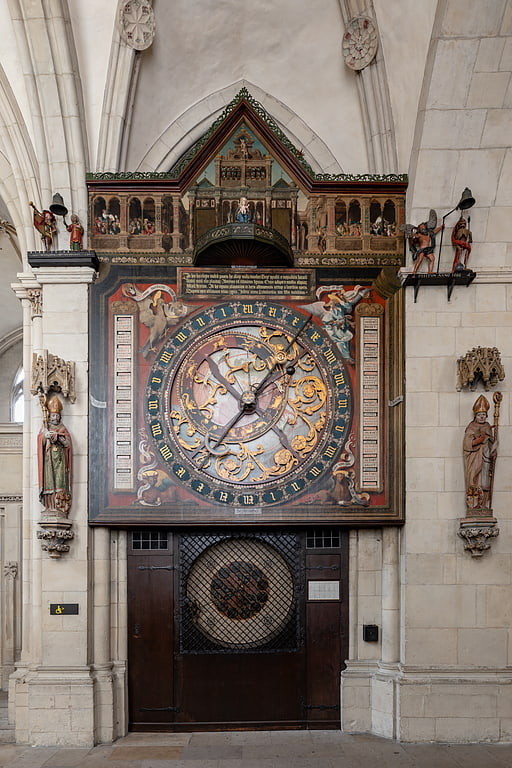
The Münster astronomical clock is an astronomical clock in Münster Cathedral in Münster, Germany.
The clock, built between 1540 and 1542, is one of the most significant monumental clocks in the German-speaking world. It belongs to the so-called "Family of Hanseatic Clocks", of which other examples survive in Gdańsk (clock), Rostock (clock), Stralsund (clock) and Stendal in near-original condition (two further clocks in Lübeck and Wismar were destroyed in 1942 and 1945 respectively). The Münster clock shares a range of characteristics with this family of clocks.
Situated in a vault between the high choir and the south arm of the ambulatory at the cathedral's east end, the clock is one of the few existing monumental clocks which turns anti-clockwise.
The chimes inside the clock (10 bells, tonal range of 1–f2) can be operated from the cathedral organ.[16]
Bible Museum Münster
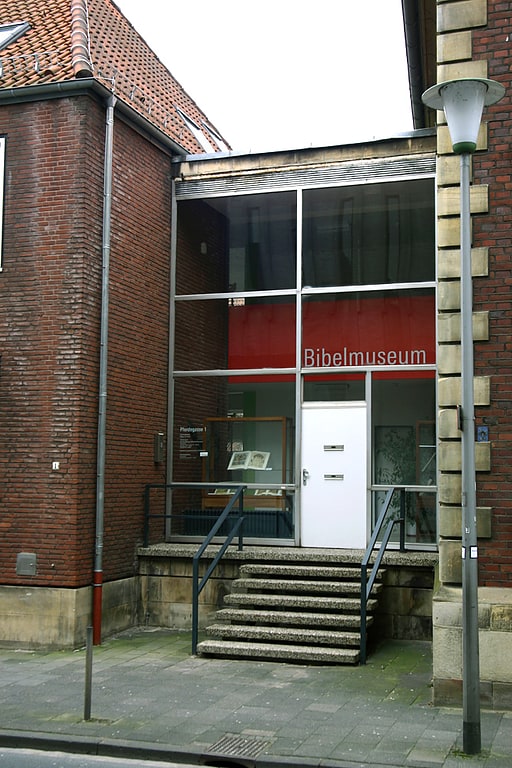
Also known as: Bibelmuseum Münster
Museum in Münster, Germany. Bible Museum Münster is a museum located in Münster, Germany, telling the story of the Bible from its handwritten beginnings until today. The main focus lays on the tradition of Greek New Testament as well as the German Bible. The museum forms part of the Institute for New Testament Textual Research at the University of Münster.[17]
Address: Pferdegasse 1, 48143 Münster (Mitte)
Halle Münsterland
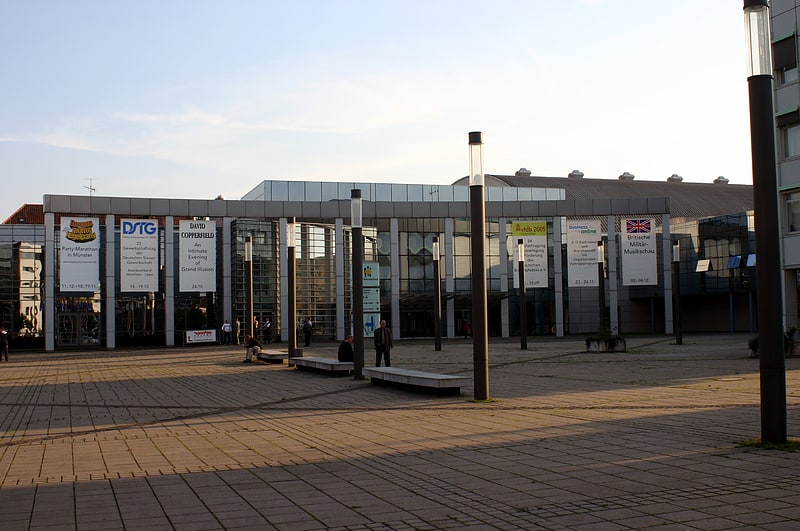
Event venue in Münster, Germany. Halle Münsterland is a 7,000-capacity convention center located in Münster, Germany. It has held concerts from well-known artists such as The Rolling Stones, Jethro Tull, Joan Baez, Pet Shop Boys, U2, Andrea Berg, Leonard Cohen, The Who and Chris De Burgh.[18]
Address: Albersloher Weg 32, 48155 Münster (Mitte)
Pumpenhaus
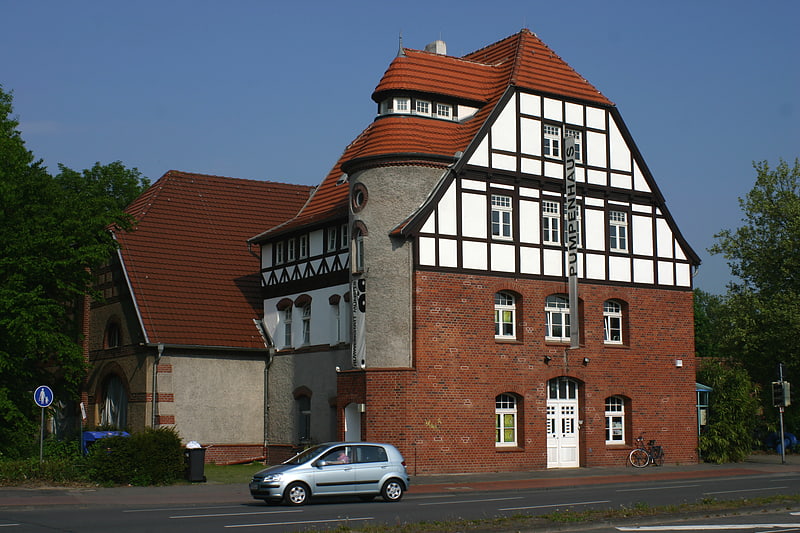
Theatre in Münster, Germany. Theater im Pumpenhaus is a theatre in Munster, North Rhine-Westphalia, Germany.[19]
Address: Gartenstr. 123, 48147 Münster (Mitte)
Hiltruper See
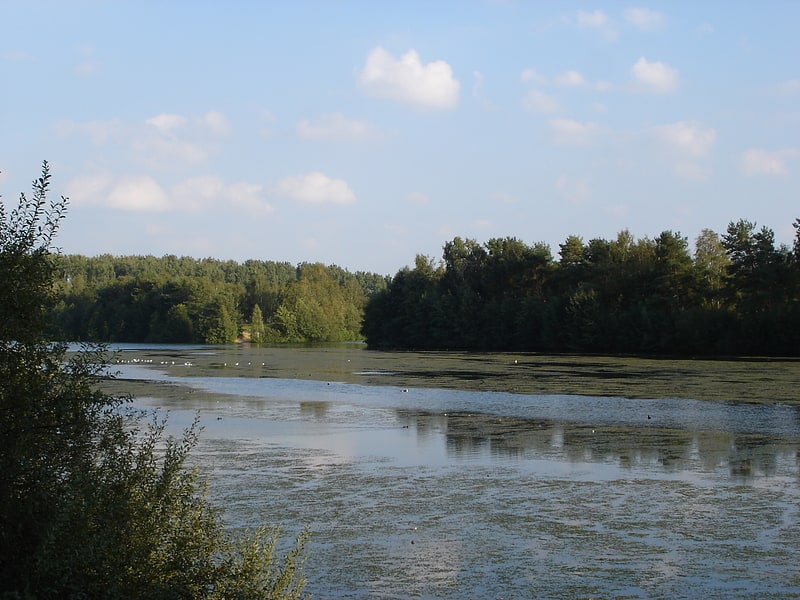
Lake in Germany. Hiltruper See is a lake in Münsterland, North Rhine-Westphalia, Germany. At an elevation of 58 m, its surface area is 15.8 ha. See the German page for more information.[20]
Erbdrostenhof
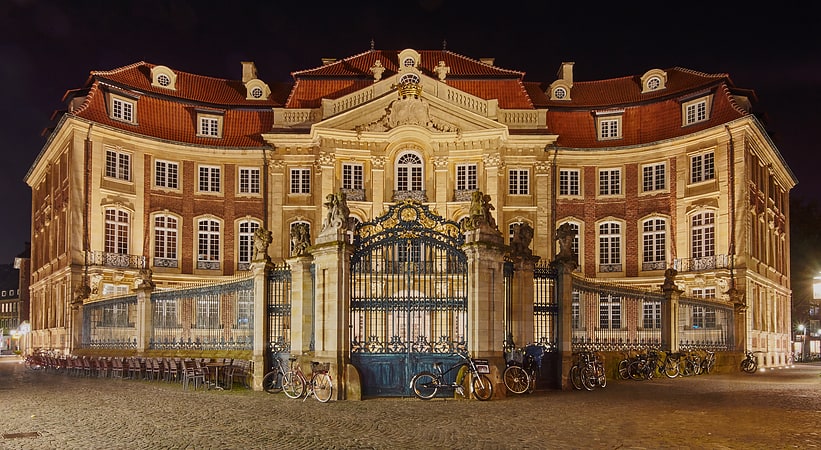
Palace in Münster, Germany. The Erbdrostenhof is a three-wing late Baroque palace in Münster, North-Rhine-Westphalia, Germany. It is located on Salzstraße. It was designed by Johann Conrad Schlaun for Adolf Heidenreich Freiherr Droste zu Vischering, Erbdrost of Münster and built between 1753 and 1757. Johann Christoph Manskirch produced sculptures for the building, whilst Nikolaus Loder painted frescoes in the interior - the latter were damaged during World War Two and restored between 1965 and 1967 by the Austrian restorer Paul Reckendorfer.
The building is also notable as the birthplace of Blessed Mary of the Divine Heart.[21]
Address: Salzstrasse 38, 48143 Muenster (Mitte)
City Museum

Museum, History museum
Address: Salzstrasse 28, 48143 Muenster (Mitte)
Geomuseum
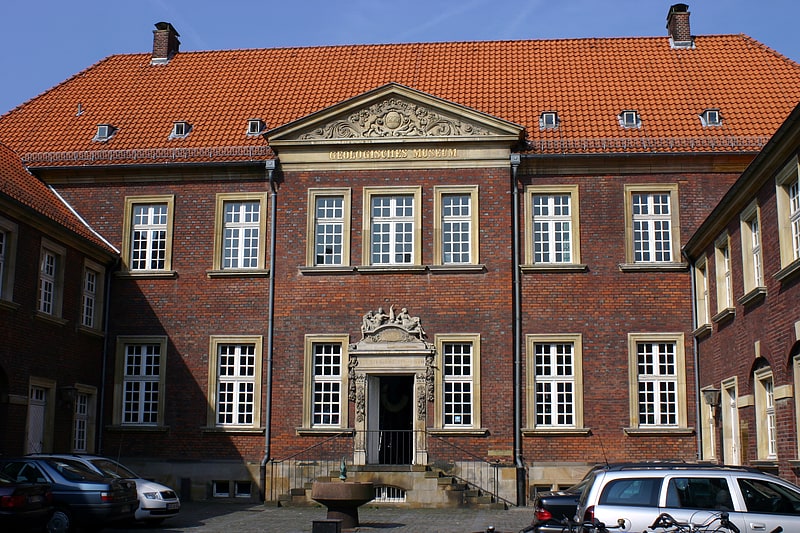
Since its opening in 1824, the Geological-Paleontological Museum of the Westphalian Wilhelms University in Münster, Westphalia, has been home to numerous fossils from various geological eras in its exhibition. Since it was for more than 150 years the only museum in Westphalia with a significant collection of fossils, many extraordinary finds came to Münster, which are exhibited in the museum and stored in the archives. In many cases, the sites are no longer accessible or have been exploited, so that some exhibits have considerable scientific value.
Address: 3 Pferdegasse, Münster (Mitte)
Lambertikirche
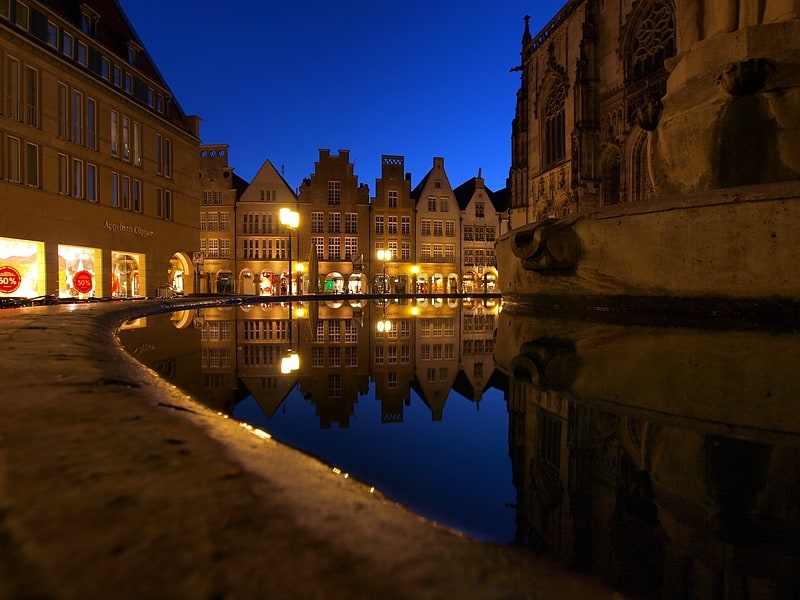
Also known as: St. Lamberti
Church building in Münster, Germany. St Lambert's Church is a Roman Catholic church building in Münster in Germany, dedicated to Lambert of Maastricht. Its present building is the most significant example of Westphalian late Gothic architecture. It lies on the north side of the Prinzipalmarkt in the city centre. Until the early 20th century, the Roggenmarkt contained the Drubbels district of housing. To the church's east lies the Alte Fischmarkt and the Salzstraße, whilst between the church and the Salzstraße is the Lambertikirchplatz with the Lambertibrunnen.
Three iron baskets hang from the church tower – in 1536 these were used to expose the corpses of Jan van Leiden, Bernhard Krechting and Bernhard Knipperdolling after they were publicly tortured and killed in the Prinzipalmarkt for leading the Münster Rebellion. In 2007 the twentieth episode of the TV-series Wilsberg, 'Die Wiedertäufer' ('The Anabaptist'), was filmed at the church.[22]
Address: 5 Lambertikirchplatz, Münster (Mitte)
St. Mauritz
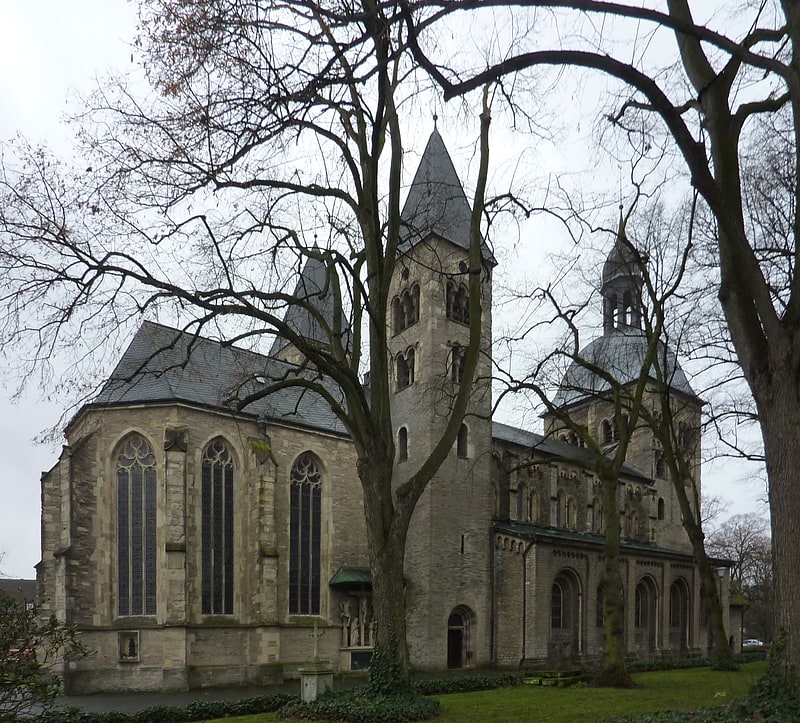
The Catholic collegiate and parish church of St. Mauritz is the oldest sacred building in Münster, preserved in parts in its original state. It is located in the west of the Mauritz district, just outside the inner-city ring road, on the Sankt-Mauritz-Freiheit.
Address: Sankt-Mauritz-Freiheit 25, 48145 Münster (Mitte)
St. Ludgeri
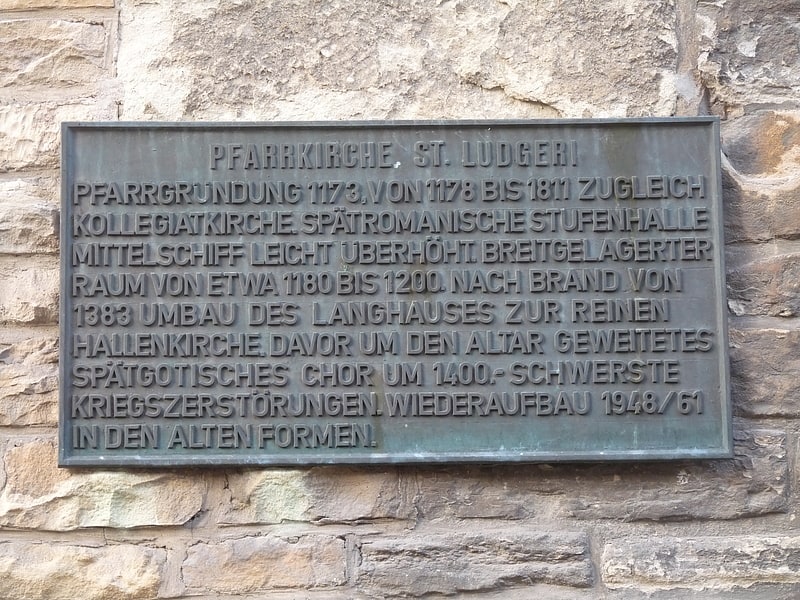
St. Ludgeri is one of the oldest Catholic sacred buildings in Münster, Westphalia, under the patrocinium of St. Ludger and was built from the year 1173.
Address: Ludgeristraße 40, 48143 Münster (Mitte)
Hiltruper Museum

The Hiltrup Museum is a Westphalian museum of local history in the Hiltrup district of Münster. It was founded in 1984 on the own initiative of the Heimatverein Heimatfreunde Hiltrup.
The sponsor is the Förderverein Hiltrup Museum e. V. The purpose of the association is to establish and maintain a museum in order to preserve and complete museum pieces from the past of the district and to make them accessible to the public. A board of trustees assists the board in an advisory capacity.
For the first 14 years, the museum was located on the upper floor of the former Wentrup steam mill. Since 1998 it has been located in the former Hiltrup fire station. Numerous volunteers run the cultural institution. The 180 square meter area shows the development of the district's history. Furthermore, temporary exhibitions are presented at regular intervals and lectures on Hiltrup's history are organized. The museum is open on Sundays.
Address: Zur Alten Feuerwache 26, Münster (Hiltrup)
Church of the Holy Apostles
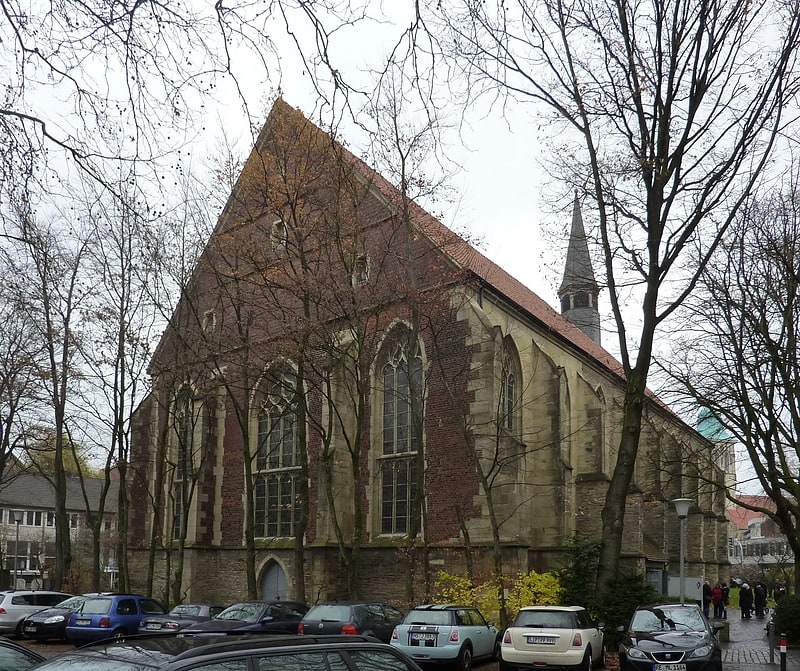
The Church of the Apostles in Münster is the main Protestant church in the city. It is located in the northern part of the historic old town about halfway between St. Lamberti and the Promenade Belt. It was built as a monastery church of the Franciscans and was the church of the Minorite monastery from 1517.
Address: 5 Neubrückenstraße, Münster (Mitte)
Clemenskirche
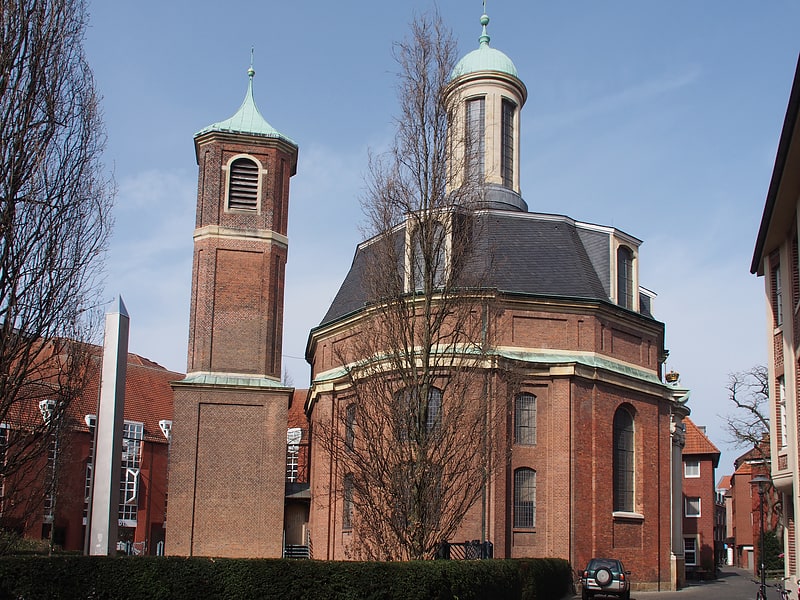
Clemens Church in the Westphalian city of Münster is a monastery and hospital church built according to plans by Johann Conrad Schlaun between 1745 and 1753 for the Brothers of Mercy. The monastery was dissolved in 1811.
Address: An der Clemenskirche 14, 48143 Münster (Mitte)
Archaeological Museum
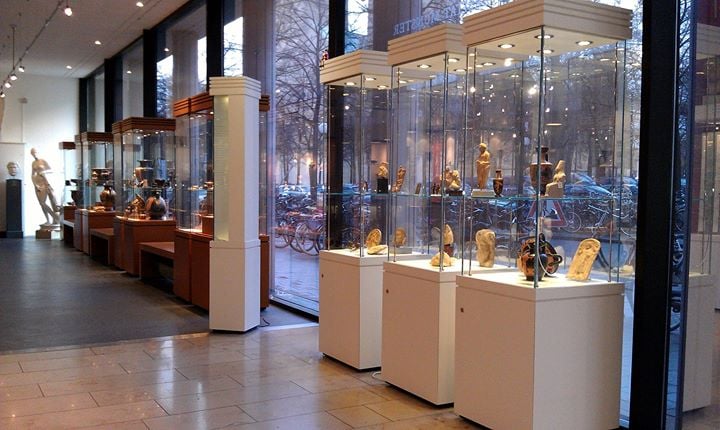
Also known as: Archäologisches Museum
Museum
Überwasserkirche
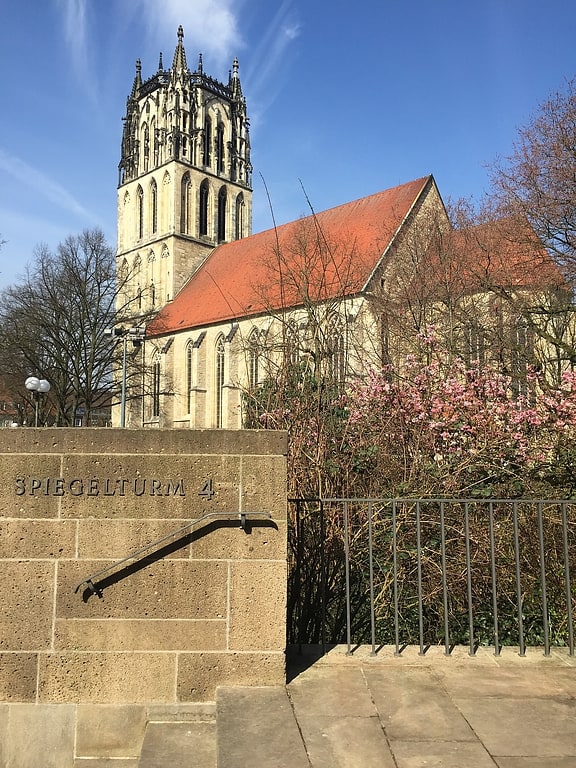
Catholic church in Münster, Germany. Überwasserkirche is the common name of a Gothic hall church in Münster, North Rhine-Westphalia, Germany. It is a Liebfrauenkirche, dedicated to St. Mary. Officially St. Marien Überwasser, it is also called Liebfrauen-Überwasser. The name literally means "church beyond the water" and describes the location as on the other side of the Aa river, looking from the Münster Cathedral. It was inaugurated as part of an educational Stift in 1040, which later became the University of Münster.
On 20 July 1941, Clemens August Graf von Galen delivered a famous sermon against the Nazi regime at the Überwasserkirche. The church was destroyed in World War II. It underwent a restoration that was completed in 1968 and another in 2016. It features two organs built in 1972 and 1985. It now serves as the parish church of a larger merged parish.[23]
Address: Überwasserkirchpl. 4, 48143 Münster (Mitte)
Westphalian Horse Museum

Museum in Germany. The Westfälische Pferdemuseum Münster - Hippomaxx is in the Allwetterzoo in Münster, Westphalia. The Hippomaxx is independently by the Allwetterzoo and promoted by a development association. Entrance is included to the admission charge of the zoo.[24]
Synagogue
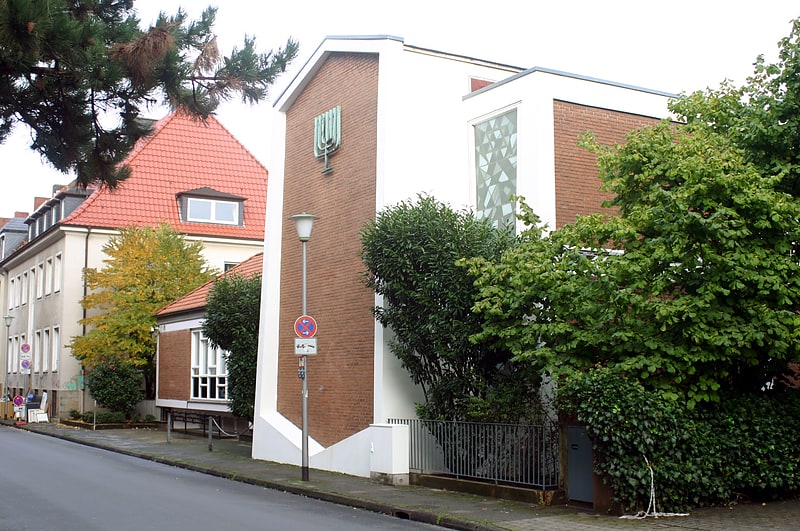
Judaism in Münster looks back on more than 800 years of eventful history, making it one of the oldest in northwest Germany.
As early as the 12th century, Münster was home to a Jewish community with its own prayer house, but this was destroyed by pogroms in 1350. From 1536 Jews settled again, under the protection of the bishop, but after his death in 1553 they could not escape expulsion. Until the 19th century there was no Jewish community in Münster. From 1616, however, there was a pass system that precisely regulated the entry regulations for Jews. In 1662, the prince-bishop issued the Münster Jewish Ordinance. Since then, a so-called court Jew was active in Münster, who represented the interests of the minority in the Münster High Diocese, but - himself an instrument of absolutism - was unable to enforce a permanent right of residence in the cathedral city.
It was not until 1810 that Jewish citizens began to resettle, fighting for their legal emancipation in Prussia during the 19th century. An important spokesman for Reform Judaism, Alexander Haindorf, worked in Münster and founded the Jewish-Humanist School of the Marks-Haindorf Foundation there. During the period of the Empire and the Weimar Republic, Jewish personalities had a significant impact on the city's public life, before the synagogue first went up in flames in 1938 during the National Socialist era and Münster's Jewish population was subsequently persecuted and murdered in the Holocaust.
Nevertheless, after the Second World War and the collapse of the Nazi regime, the Jewish community was able to revive and a new synagogue was consecrated as early as 1961. In 2018, the community has 589 members and is once again part of the city's image. It is a member of the State Association of Jewish Communities of Westphalia-Lippe.
Address: 9 Klosterstraße, Münster (Mitte)
Lepramuseum
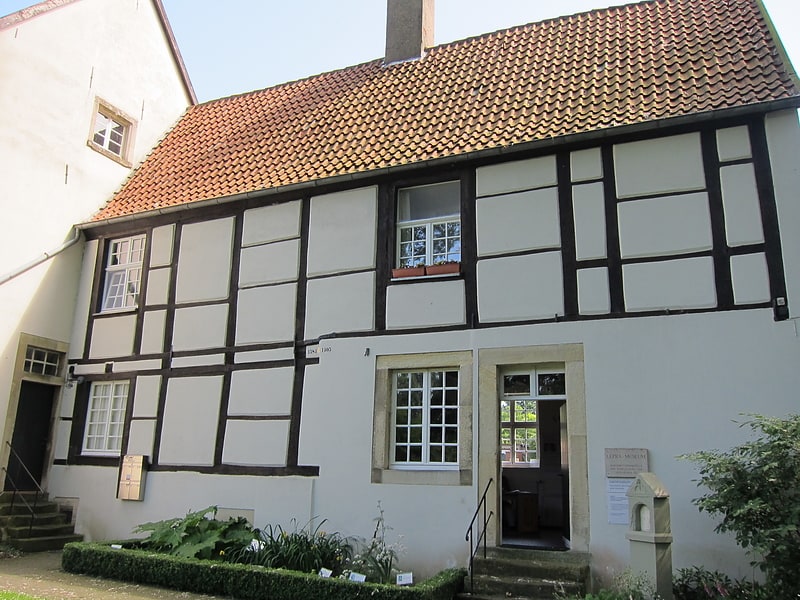
The Leprosy Museum in the Kinderhaus district of the Westphalian city of Münster is the only museum in Germany dedicated to the history, spread and control of the disease leprosy. It also offers special and traveling exhibitions, colloquia, lectures, publications, and educational materials on the subject. The museum is supported by the Gesellschaft für Leprakunde e.V.
Address: Kinderhaus 15, 48159 Muenster (Nord)